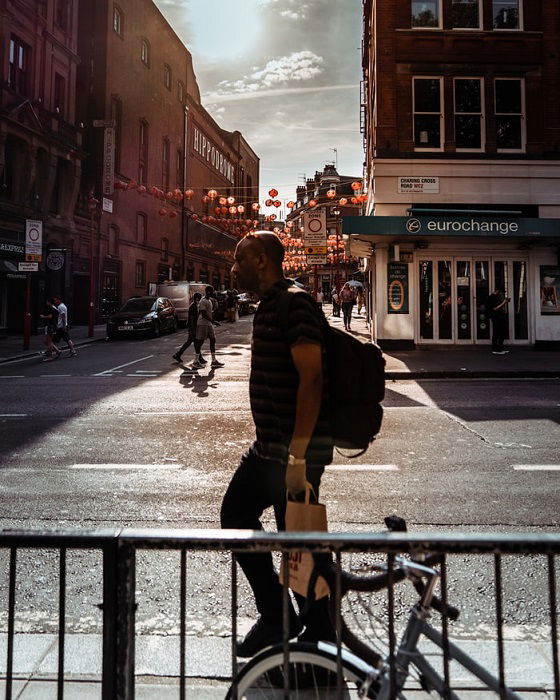Top Guidelines Of Street Photographers
Top Guidelines Of Street Photographers
Blog Article
The 9-Minute Rule for Street Photographers
Table of Contents6 Easy Facts About Street Photographers ShownOur Street Photographers IdeasThe Greatest Guide To Street PhotographersNot known Facts About Street Photographers3 Simple Techniques For Street Photographers
Street photographers do not always have a social function in mind, but they like to isolate and record moments which could or else go undetected.He was affected by many of those that influenced the road digital photographers of the 1950s and '60s, he was not chiefly interested in recording the spirit of the street. The impulse to aesthetically document individuals in public started with 19th-century painters such as Edgar Degas, douard Manet, and Henri de Toulouse-Lautrec, that worked side by side with digital photographers attempting to record the essence of urban life.
As opposed to Atget, photographer Charles Marville was worked with by the city of Paris to develop an encyclopaedic record of Haussmann's city planning job as it unravelled, hence old and brand-new Paris. While the professional photographers' subject was basically the very same, the outcomes were markedly various, demonstrating the impact of the photographer's bent on the character of the images he produced.
Offered the great high quality of his photos and the breadth of product, architects and artists usually acquired Atget's prints to use as reference for their very own job, though industrial passions were rarely his primary inspiration. Rather, he was driven to photograph every last residue of the Paris he enjoyed. The mingled passion and urgency of his mission luster through, leading to photographs that narrate his own experience of the city, qualities that anticipated street photography of the 20th century.
Street Photographers Can Be Fun For Everyone
They disclose the city through his eyes. His job and essential understanding of photography as an art kind worked as inspiration to generations of professional photographers that adhered to. The next generation of road professional photographers, though they likely did not refer to themselves as such, was introduced by the photojournalism of Hungarian-born digital photographer Andr Kertsz.
Unlike his peers, Brassa utilized a larger-format Voigtlnder camera with a much longer direct exposure time, forcing him to be extra calculated and thoughtful in his technique than he may have been if using a Leica. (It is believed that he might not have been able to pay for a Leica back then, however he did, nonetheless, utilize one in the late 1950s to take colour photographs.) Brassa's photos of the Paris abyss illuminated by synthetic light were a discovery, and the compilation of the series that he published, (1933 ), was a major success.
Cartier-Bresson was a champ of the Leica cam and among the first digital photographers to optimize its capacities. The Leica enabled the digital photographer to communicate with the surroundings and to record moments as they occurred. Its reasonably little dimension also helped the professional photographer discolor into the background, which was Cartier-Bresson's preferred technique.
Street Photographers - An Overview
It is because of this fundamental understanding of the art of picture taking that he is typically attributed with discovering the tool around once again approximately a century given that its development. He took pictures for even more than a half century and affected generations of photographers to trust their eye and instinct in the minute.
These are the concerns I will try to respond to: And then I'll leave you with my very own meaning of street digital photography. Yes, we do. Let's kick off with specifying what an interpretation is: According to (Street Photographers) it is: "The act of specifying, or of making something definite, distinctive, or clear"
No, most definitely not. The term is both limiting and have a peek at these guys misdirecting. Seems like a road photography should be images of a roads best?! And all road digital photographers, with the exception of a handful of outright newbies, will totally appreciate that a road his response is not the crucial element to street digital photography, and really if it's an image of a road with perhaps a couple of uninteresting people doing absolutely nothing of rate of interest, that's not road photography that's a photo of a street.
All About Street Photographers
He makes a legitimate factor do not you think? Nevertheless, while I agree with him I'm uncertain "candid public digital photography" will catch on (although I do kind of like the term "honest digital photography") due to the fact that "street digital photography" has actually been around for a long time, with lots of masters' names affixed to it, so I think the term is below to remain.
You can shoot at the coastline, at a festival, in a street, in a park, in a piazza, in a coffee shop, at a gallery or art gallery, in a city station, at an event, on a bridge, under a bridge ...
Yes, I'm afraid we terrified no choice! Without policies we can not have a definition, and without a meaning we do not have a style, and without a genre we do not have anything to define what we do, and so we are stuck in a "guidelines interpretation style" loophole!
How Street Photographers can Save You Time, Stress, and Money.

Report this page